There’s no airline with more potential to be better than it is today than American Airlines. That’s been true at least since US Airways management took over nearly a decade ago.
However they’ve lacked a clear mission and that’s led to employee confusion, are they competing with low cost carriers or Delta? Are they trying to deliver a premium experience or a basic economy one?
With their high costs, they need to earn a revenue premium in order to generate a profit, but they’ve been reluctant to make investments that would help to deliver the premium product.
As a frequent customer, with Executive Platinum status for over a decade and even briefly a ConciergeKey member, I’ve observed many of the pain points at the airline – many of which could be improved at low cost, or are bare minimum investments they need to make to remain competitive and continue generating revenue. So in the interests of helping American to deliver both a better and more profitable product, I share 12 realistic ways they can improve the customer experience.
- Roll out their new Admirals Club template.. rapidly. Actually make the capital investment. So far we have only the Washington National E concourse club, and it’s gorgeous. We’re supposed to get Denver, Newark and Austin (though Austin was announced in 2021 no work has started, and though no further official word has come out I’ve assumed it’ll change locations to the West Gate Expansion project which won’t complete until end of 2026).
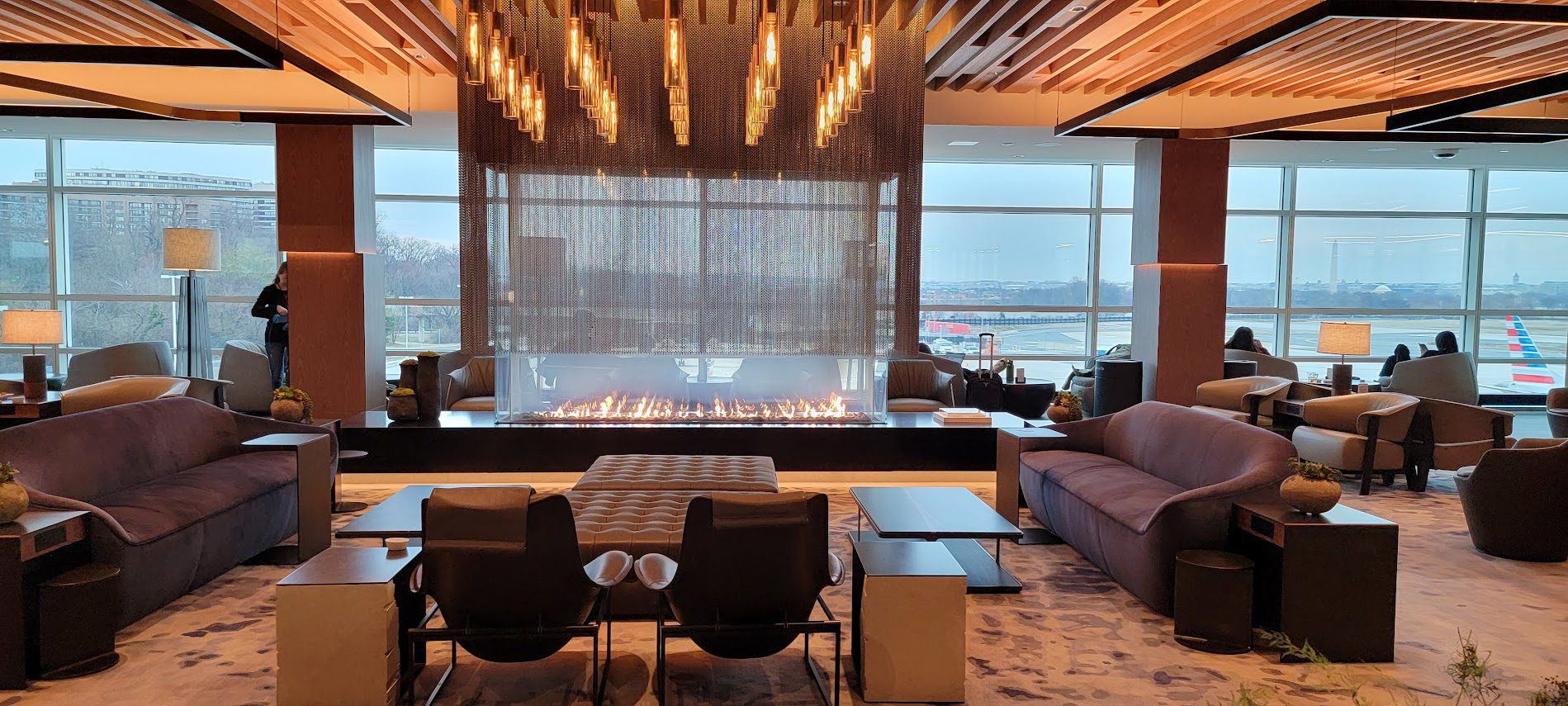
- Add digital capabilities, but really. Vasu Raja says by the end of the year American will offer a 100% digital experience, but I do not believe this is true. We should be able to process mileage and systemwide upgrades online, no need to speak to reservations. Partner awards should actually be searchable online and the truth is partner inventory often doesn’t come up even when it’s available.
Award travel should be ticketed instantly, too, like at many other airlines – at American you can wait over a day to get a ticket issued, and you never know whether something was set up incorrectly forcing the reservation to fall out of the ticketing queue. You call back, agents just say “oh, they’re really backed up, just keep waiting” but you should always call back if it’s been two days – I’ve never seen an award ticket itself after more than two days – and agents are always wrong about this.
- More premium seats. Boeing 777-300ERs and Boeing 787-9s are going to go more premium heavy, but US Airways management selected a paltry 20 business class seats for 787-8s and actually took business seats out of 777-200s. You often can’t buy a business seat. And domestically the Airbus A319 just doesn’t have enough, and is often on premium routes with sold out (paid) forward cabins days before departure.
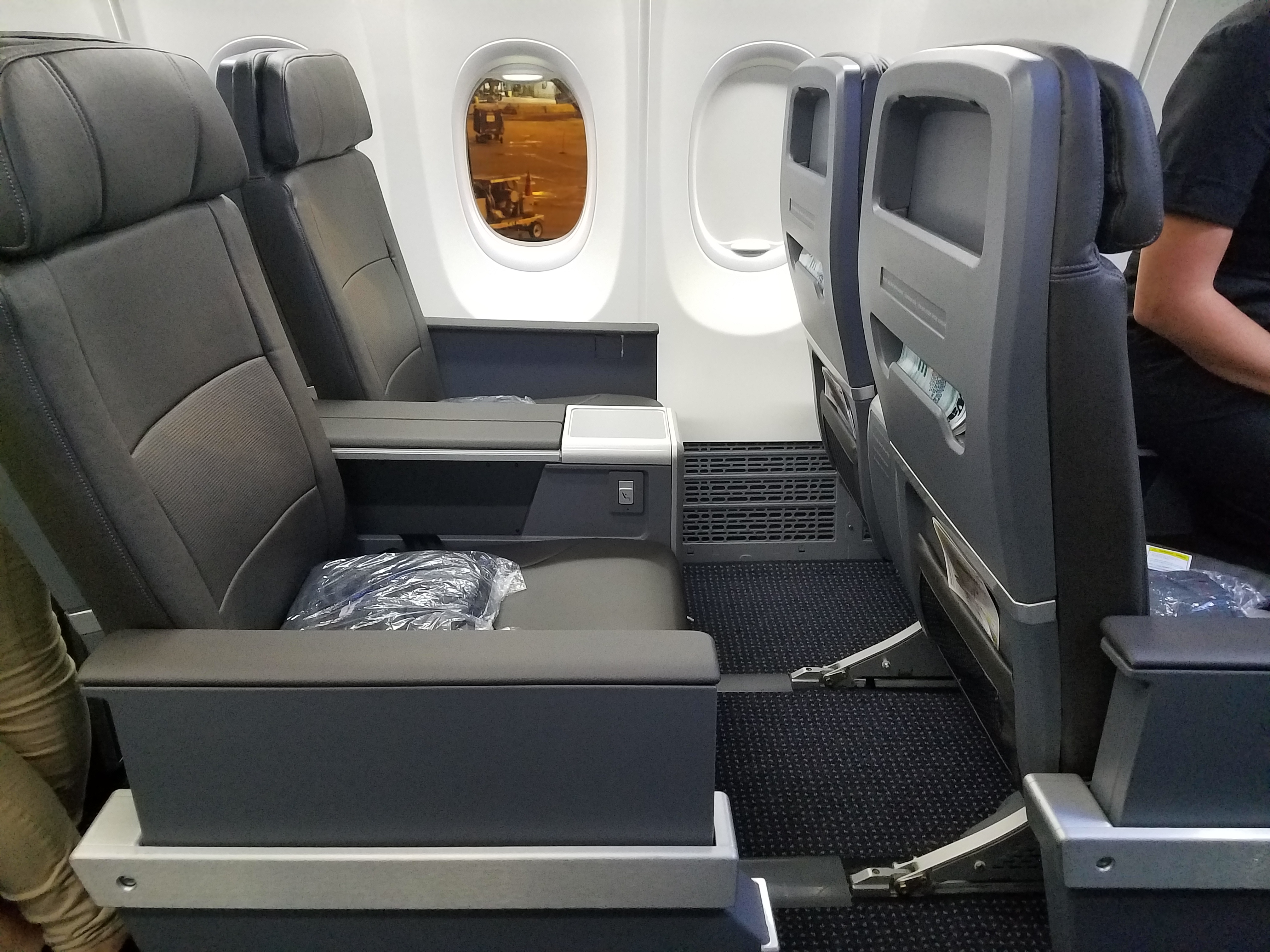
- Revamped credit cards. The Citi Executive card was alright when it launched, but it’s been a dozen years and competitor products have passed it by. Sadly surveys I’ve seen have them considering making it worse, raising the fee and making authorized user card access more costly, while relying on third party merchant-funded style offers to appear more attractive. Meanwhile earning Loyalty Points (credit towards status) creates a reason to spend on the cards, but they’re otherwise low-earn products that have taken away trip delay and similar protections so you get penalized for actually putting American Airlines airfare spend on their cards when things go wrong with American Airlines.
- Fix the smaller narrowbody fleets. The Airbus A319s need the same bigger overhead bins that 737s and Airbus A321s have. The old legacy US Airways A320s have had virtually nothing done to them and are in desperate need of an interior refresh. It may be an open question whether these stay around, but that’s been the case for years.
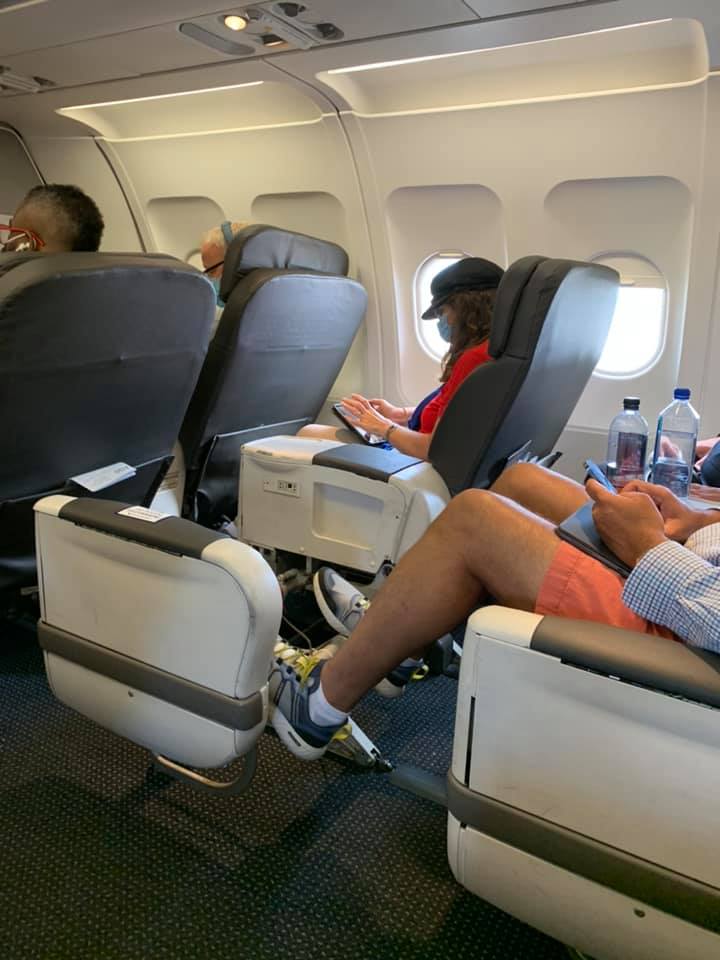
- Better wifi in regional jets. There was a time that you couldn’t do satellite internet in a large Embraer 175, so you had to accept air-to-ground (Gogo’s “Slo-Go”). That’s no longer true. In fact regional jets with 50 or fewer seats can have satellite wifi now, while American’s have none. I book away from these flights, and book away from American if I have to, in order to avoid hours of unproductive time in the air.

- Reduced price internet and re-consider seat back entertainment. Delta and JetBlue don’t charge for internet. American views JetBlue as a ‘seamless partner’. Other airlines hover around $8 for internet, while American can charge $20 per flight. Their internet is good, but not better than Delta’s, and others will catch up. They’re just charging more than competitors for a similar product.
Meanwhile it may have been defensible to go without seatback entertainment back when (1) wired entertainment was a huge cost (they can stream wirelessly to the screens now) and (2) United was ditching screens too, and they could forfeit the premium end of the market to Delta – but now even United is adding screens back in leaving American alongside Southwest.
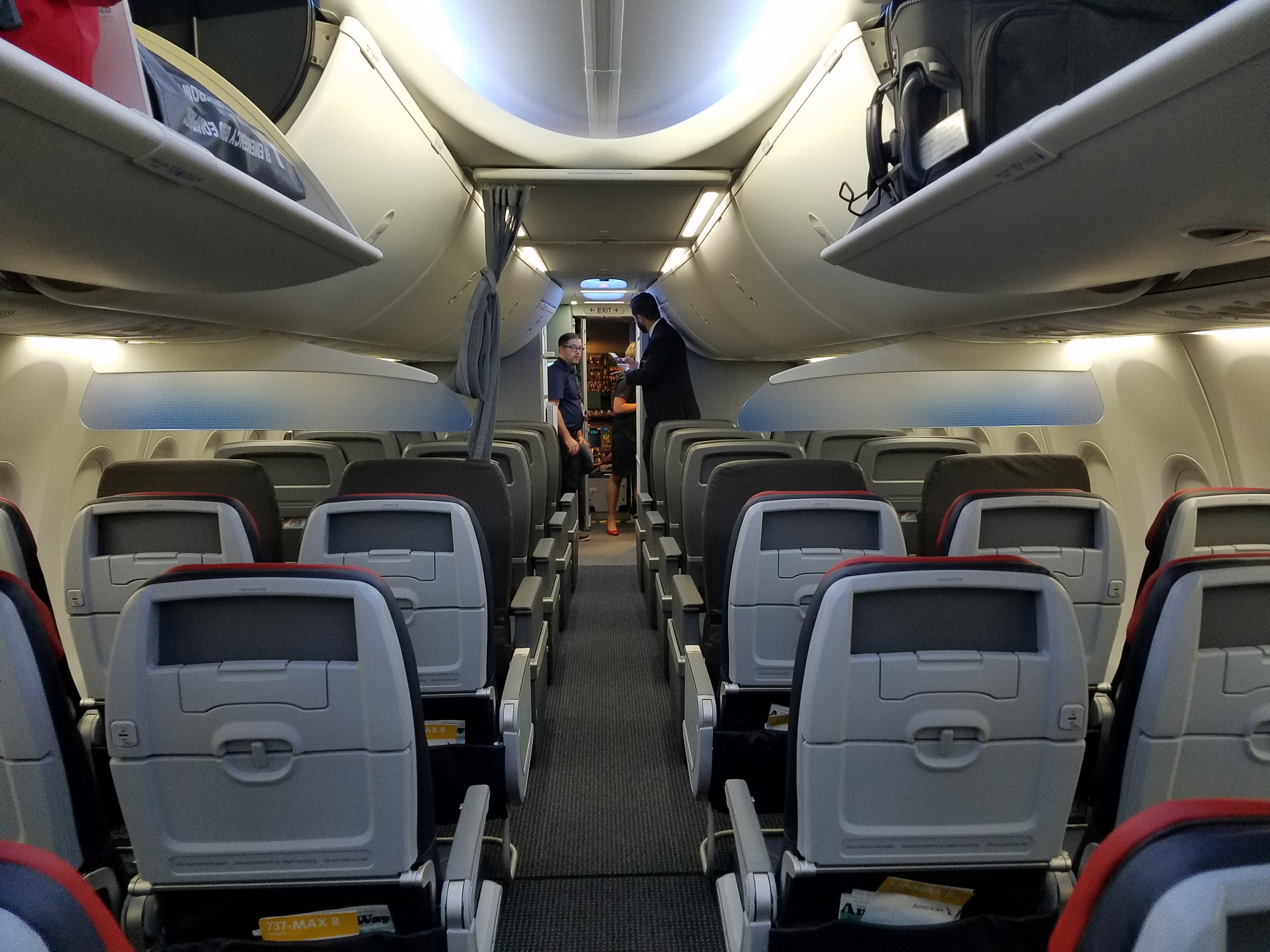
- Lounge food. Selling food from vending machines in the lounge is just sad (and the vending machines often don’t work, along with the coffee machines). Delta and United both have more robust food offerings compared to American. There’s no excuse for this, especially when American’s guacamole and avocado toast efforts have even been funded by Mastercard rather than coming out of their own pocket.
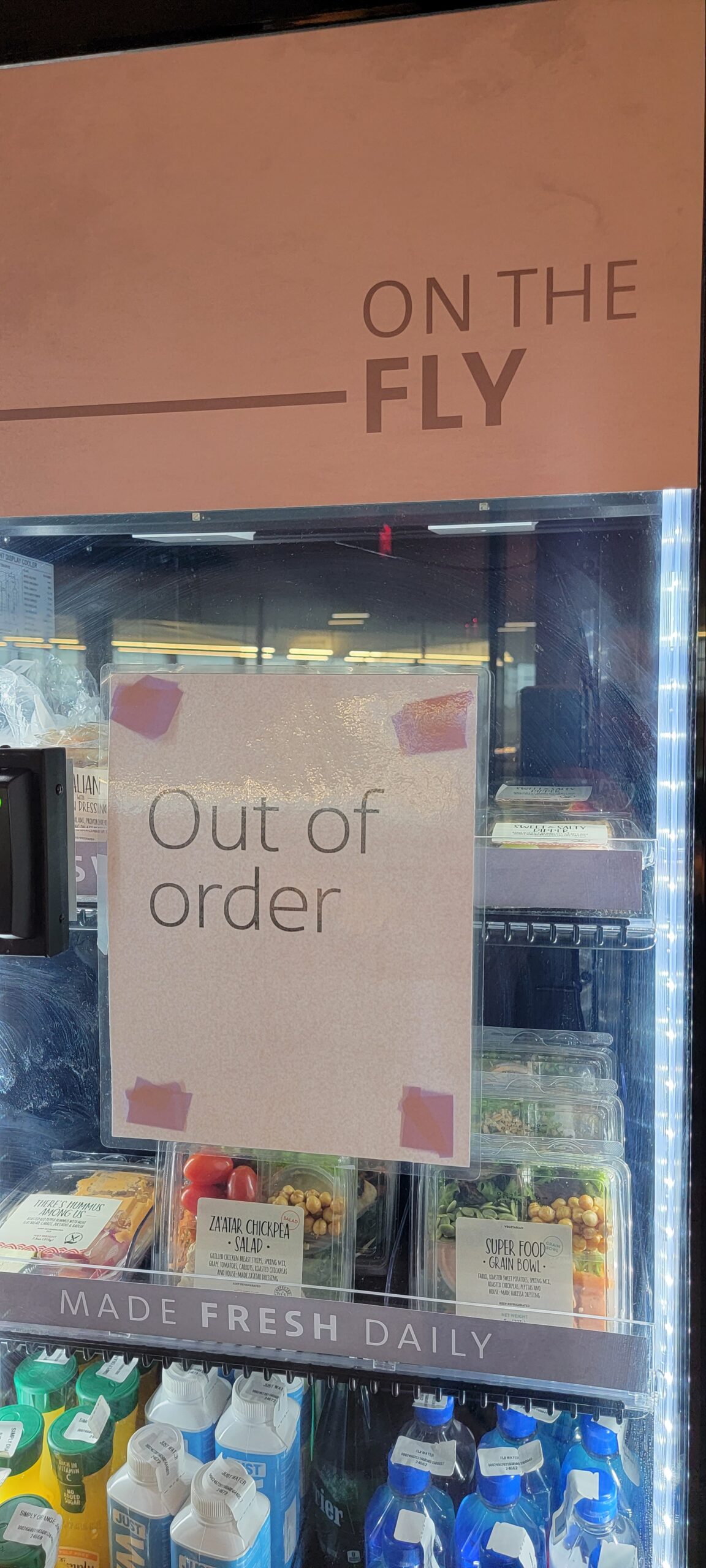
Credit where it’s due, though, the baklava now available in some clubs is sinfully good.

- Offer competitive lifetime elite program. Delta lets you earn up to lifetime Diamond, United lets you earn lifetime Global Services. United gives your partner the same status as you when you’re a lifetime elite. In contrast American AAdvantage tops out at lifetime Platinum, their second of four public tiers. And while status-earning is based on Loyalty Points (miles from most source) lifetime is still based on miles flown.
It’s hard in a way for American because up until a dozen years ago, all miles earned counted towards lifetime – all card spend, all initial bonuses even – so they people not just with 3, 4 million miles but with 70 million lifetime miles and more. So what do you do?
- Take current lifetime miles earning and add loyalty points to it, make it twenty times or even twenty five times the qualifying level for a tier to earn that level of lifetime status. Say lifetime Executive Platinum at 5 million points.
- And if the model shows too big of an elite pool, impose a second criteria that you need to have earned a level 10 times before getting that level for life. E.g. 1 million points and 10 years of Gold or higher for lifetime Gold; 2 million points and 10 years of Platinum or higher for lifetime Platinum; 3 million points and 10 years of Platinum Pro or higher for lifetime Platinum Pro; 5 million points and 10 years of Executive Platinum or ConciergeKey for lifetime Executive Platinum. Then really drive value to the program with lifetime ConciergeKey at 8 million points (double United’s number for Global Services, but the points can be easier to earn).
- Better standby and same day confirmed change policy. American has the most hubs and biggest domestic network, but customers can’t use it. In order to make a confirmed same day change to get home earlier, you have to keep the same number of connections (no switching from a connecting itinerary to non-stop or vice versa) and you have to connect through the same hubs. Routing changes aren’t allowed, but that often means there aren’t flights you’re eligible to change to. There may be open seats that would get you home early, but you can’t use the flights because they’d connect you through a different city. No other major airline is as restrictive.
- Stop selling unrealistic connections. 25 minute minimum connecting times in Phoenix are unrealistic – a 10 minute delay and passengers start blowing connections. The next flight is boarding when they land even when their inbound aircraft is on time, and the airport is more sprawling than many expect. Charlotte is overscheduled, not just for the terminal facility (at peak times you can barely move down the concourse) but also for the taxiways, and it’s not uncommon to sit and wait on arrival.
In a sense I’m actually torn about this – I know what connections are risky to book and I prefer having the option to book them (or not)! But for the median passenger these connections too often end up in a bad experience – a missed connection, standing by for a later fight that’s already full, and missed events on the other end.
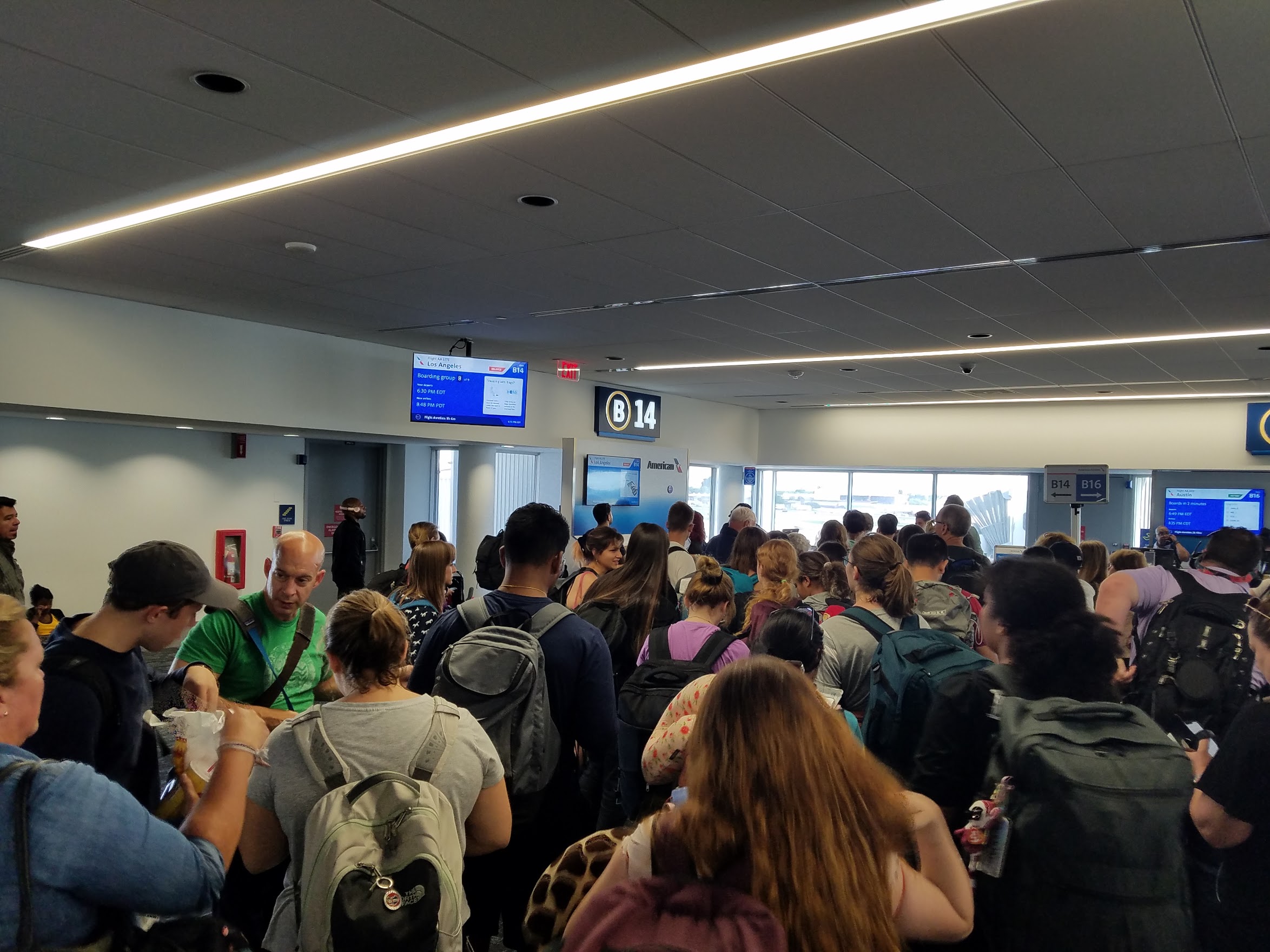
Charlotte - Allow CLEAR in terminals they control. Delta and United own stakes in CLEAR, which uses biometrics to identify passengers and expedites airport security. American, which doesn’t own a piece of the company, won’t allow it to operate in terminals that they control. There’s no CLEAR in the American Airlines terminals in Miami, New York JFK, Charlotte, Chicago O’Hare or Dallas for instance.
American would argue that this isn’t a long-term solution to security challenges, and they aren’t wrong, but CLEAR benefits travelers now and should be allowed to operate in the short-term rather than passengers being denied the option and forced to wait for a better future (which may never come). The airline could actually earn money allowing CLEAR to operate.
I’d love a bigger international route network, but American retired their Boeing 757s, 767s, and Airbus A330s. Japan Airlines doesn’t get them enough Asia, and not every European city should be reached through Heathrow. But those are bigger asks than I’d make here.
And if I had my druthers American would promise never to serve a turkey sandwich again in first class, and restore meals to competitive ‘exception markets’ shorter premium routes. There are just fewer flights that offer meal service today, and in many cases the meals aren’t as good still as pre-pandemic let alone pre-merger (even if their food has been better than Delta’s and United’s). I also wish first class legroom wasn’t so tight in the airline’s new configuration. They don’t seem like they’re trying anymore for the premium business (I don’t recall how long it’s been since I was offered a mint in first class, let alone a blanket or pillow).
However here I’m focused on clearly smart business decisions that are wins for the customer. Nicer lounges and better lounge food would sell more credit cards, and also keep American competitive with Delta and United. Upgrading their co-brand cards with bank partners, keeping up with the competition, is crucial for their profitability. Bigger overhead bins in the smaller narrowbodies contribute to on-time performance (avoiding time wastes of gate checking bags) plus they’ve already made the investment in most of the fleet.
So I think it makes sense to prioritize items like these. What would be on your list?


@Gary: 1,2, 5, 8 with you 100% Also on frequent flyer status.
#2: AA’s IT dept just fails — over and over. Look at how they F’d up AIrpass and drove a stake into into its heart.
#3. AA’s business seats are sad and out of date, yet they want to do away with Flagship First? The 777-200s should be retired and replaced with A350s.
#4. This is a disgrace if you’re not in a Flagship Lounge. It’s just inexcusable.
#11. International is worse. I tell everyone who’ll listen that you need a MINIMUM 4-hr inbound to LHR. Jiont AA/LHR issue but it is what it is.
@Gary…Well, aside from the fact that these suggestions make far too much sense to realistically be considered by AA management, I beg to differ with *one* item: #11. It’s not that AA doesn’t sell unrealistic connections — they do — but even 45 minutes is (especially @PHX, CLT, and DFW — where God only knows what terminal you may have to run to) far too short a time! I’ve had to switch terminals in Dallas, literally run from deep in Concourse E across the entire airport complex to one of the last gates in the A Concourse and barely made it before they closed the door!
Frankly, I think their major problem is employee morale! Many years ago, Dougie Parker TOLD them that if they do what management tells them to do, they’ll make money. Well, that hasn’t worked out AT ALL! Management’s p*** poor relationships have caused many issues. The unions aren’t much better. With both sides working against each other, there is no hope for a better product. Management and the union leaders need to take a Dale Carnegie Training Class to learn how to work together. My company GIVES a monetary reward to EVERY employee when we meet or exceed DOT statistics. At my level, that amount doesn’t effect my paycheck as much as the people who empty the “honey wagons” but the point is…WE ALL PULL ON THE SAME SIDE OF THE ROPE. If anyone comes up with an idea that can save money, enhance the customer’s experience, etc. that person gets a portion of that year’s savings! Tell me which side of the rope I’m gonna pull on??? Of course, if American went out of business…
+1 for Clear. DFW is our local airport, so to some extent we’re stuck with AA, but when we’re with Delta in terminal E, using Clear is a reminder that we miss it for 80% of our flights.
Free wifi for sure, at least for anyone with status Gold and above, and a personal pet hate (and this might be niche) is that flights to Vegas and Cancun seem to only have 2 bottles of fizz before they run out. It’s Vegas and Cancun….pack a few extras!
Last thing would just be better cleaning of the aircraft. I know the turn-arounds are fast these days, but pulling the tray out to see a bunch of crumbs or sticky soda rings isn’t cool.
All for #10. It is ridicules when flights get canceled when connecting through DFW because of thunderstorms and I can’t take an alternative flight through ORD instead to get home. Even when there are seats. Locking in a location to travel through for flight changes is maddening.
#2 & #4 would be great. Rather than adding seat screens, id just love to get the phone/iPadmini clamps on all seat backs. I don’t remember the last time I actually used one of the seat screens, even on international flights.
They need to bring back the wide bodies on coast to coast flights.
They are charging $2500-4000 for travel between MIA and LAX in F/J. I don’t mind the price although too high, but worth it for a lie flat seat and premium amenities. But to charge that for a 737 or neo is just plain insane. They are losing business because I will not fly on those airplanes even if it was free. But when I average around $3000/ticket, I want comfort. Just bought a one way SFO JFK MIA for $2200. The removal of 777’s et al means no more FSL at MIA and LAX.
I realize other airlines are using narrow bodies, but AA could be better than the other airlines with a better premium product!
You can’t compare lifetime period.
I am on a United flight right now; in coach. The flight attendant who gave me a drink stopped to thank me for being 1K. I have had notes from the cockpit more than once saying thank you for being 1K. United just does a much better job of service than AA.
I have been EXP since 1999 and NO-ONE at AA (that i can remember) has ever thanked me or treated me as just another passenger.
Dont get me started on their awful 320s.
I also have the Business Citicard. I can never get it to balance; they close the books and then keep crediting payments. It drives me and the CFO nuts.
Agree, as usual, with Gary 100%. AA has the potential to be the best in class. Quite literally.
Good suggestion, you pretty much stated what I would like to say to AA.
I have been with AA for more than 10 years as EXP, I saw things have been getting worse and worse, compared to United and Delta.
As you stated here, it is probably because of USAir management, I totally agreed. Just like SVB failure, why, because their management has a track record of failure before.
Was with AA for 35 years. We used to have a program that rewarded us for a job well done. We got so good at it. They did away with it. It was called the LEAAP program. It was essentially the carrot and stick scenario. Then there was a program that was Work hard and Reward program. That was built on company performance metrics ( tied to the DOT airline performance standards ) That too flopped. Also, they had an AAachievers points program to submit great ideas for points, and to entice to other outstanding activities. That too, went by the wayside. The only thing I think is left is the baggage performance reward program, they do reward you between 50 and $100 per employee but after taxes it’s more like 25 to $50. Thanks alot Uncle Sam!!! Personally, I think it was a brilliant idea to get rid of the seat back screens. They cause more weight and these days a majority of people watch movies or play games on their phones or laptops. So I definitely understand the reason why they pulled that out, in place of that they should have much faster internet.
American Airlines seems to do the opposite of what passengers request in surveys, blogs, feedback etc… I can’t figure out why they don’t get it. Still.
@Gary – have you ever had an in depth conversation with AA regarding the lifetime program ? I would really like to hear what they say .I agree that the program is not competitive at all .
When someone hits 2 million lifetime they are granted Platinum status . If , at 3 million , you gave travelers Platinum Pro , what’s the real cost ? The lifetime Platinum is already getting free checked bags and a chance of comp upgrade . So , Plat Pro gets a bit more upgrade priority , scaled down choice benefits , and better mileage earning. Is it really a big cost to stretch to Plat Pro at 3 million ?I really don’t know the answer. That is why I asked .
I don’t have a problem with keeping Exec Platinum out of the lifetime program to maintain its exclusivity. But , I just can’t get my arms around not going to Plat Pro . Let’s face it , folks are buying or buying up to premium cabins so the upgrade benefit isn’t as attractive as it once was .
I surmise that when Plat Pro was granted OW Emerald status , AA gave up consideration of expanding the lifetime program . I could go on and on but you get it .
@Maxie Dean – they were definitely looking at the lifetime program before the pandemic, that got put on hold but I understand it’s a live project again
Wow, great initial article and great comments !!! Agreed on all counts, no additional comments, but two questions:
# 9: You mention: “American AAdvantage tops out at lifetime Platinum, their second of four public tiers”, is this correct ? Prior to ConciergeKey, I viewed Platinum as 3rd Tier behind Executive Platinum and Platinum Pro. Adding ConciergeKey, one could make an argument for Platinum being 4th (behind Executive Platinum, Platinum Pro and ConciergeKey).
# 12: I’m assuming that you and virtually 98 % of the readers are TSA Precheck (as am I), what’s the big deal about CLEAR ? Sure you’ve got some biometrics, but CLEAR passengers still remove their shoes, electronics, liquids and outerwear.
No worries if I’m unclear abut this, always interested in learning something new !
A data point re #7 – my 6-year-old says that DL is the best because they have IFE screens and games. This is from a kid who gets to bring and watch his own screen no matter the airline.
@TexasTJ – second from the bottom, Gold being the first tier, Platinum second, Platinum Pro third etc.
If you have PreCheck, CLEAR lets you skip to the front of the PreCheck line.
Gary,
just about every thing you wrote as wrong w/ AA is the result of AA’s very low profitability and high levels of debt due to its massive fleet spending and stock buyback programs.
The solution to all of the items on your list is for AA to make money at the same or better ratios as its competitors. The good news is that AA IS generating margins on par w/ DL and UA and that will continue into 2023 (AA might well make money in the first quarter while UA loses money).
You can’t turn a ship around on a dime but AA’s current execs seem to understand what it needs to do.
But while those changes are implemented – and your list should definitely highlight to AA what its elite passengers want if they don’t know already – they will stick w/ their high volume strategy which means running as many passengers through their system as possible.
When my international flight lands at DFW to connect to an AA domestic flight I take the bus to the United terminal to use Clear, then take the train to my AA flight. It’s quicker and easier. AA needs to figure out how to participate in Clear – it’s here to stay and is amazing.
And I’m EP and have been for many years.
I’m surprised that Tim Dunn is as complementary about American as he is, but his comments are pretty much spot on. As much as I disagree with Tim, he often makes salient points – even when we don’t see eye to eye. To that point, I’ll focus on the points from your piece that involve larger capital expenditures. While American needs to focus on reducing its debt, there are things it can do.
The points re:
Roll out their new Admirals Club template.. rapidly.
This will require a boatload of money, and there are issues such as finding space and getting permits that create challenges and take time.
—-
Add digital capabilities, but really.
Again, a large, though not huge, expense.
—–
More premium seats. and Fix the smaller narrowbody fleets.
Both of these take money – and lots of it. American knows what its customers pay for. That’s more important than what people say they want. Having written that, I’ve noted that some American execs have talked about adding a row of first class to the A319 fleet. – BUT don’t expect many improvements on the A319 and A320 fleets. Both are older and will likely be replaced in the not-too-distant future (when the debt has been reduced to more manageable levels). .
——-
Better wifi in regional jets.
Not an immediate priority, but not out of the realm of possibility.in the not-too-distant future. I’m guessing the airline will focus on over-water flights.
—-
Reduced price internet and re-consider seat back entertainment. Lounge food.
The former will probably appear before the latter. It’s not a major undertaking to replace food. it takes a lot of work and money to replace seats.
To clarify the fleet comment above: About 100 of American’s 133 A319s are older ex-US Airways aircraft. The rest are from the 2011 American order. I can see the newer A319s being refurbished. The 100 or so ex-US aircraft are probably headed for Marana. The 48 A320s are also older US aircraft and are likely to join their smaller brothers at Marana. It’ll be interesting to see what replaces them.
To clarify about reduced-price internet, I’m guessing American will respond to the competition. Restoring seat back entertainment probably requires new seats. If that’s the case, it’ll be quite pricey.
AA’s obstinate attitude towards disallowing CLEAR presence in airport terminals controlled by AA is childish and asinine. It essentially hurts their prime customers – those who likely travel the most. This would be an immediate and easy fix with no capital investment (unlike most of your other suggestions).
Initially I was perplexed by the elimination of the seat back screen entertainment but now I’m a believer. My own personal device using the WIFI connection to AA entertainment delivers a superior experience. I can better control the glare by moving my personal device around as opposed to the seatback screen. Dead personal devices are not a problem with conveniently located power ports. On my recent flights on AA, the gate agents announced the need to download the AA app at the terminal (although again a frequent flier would already know this). I believe the majority of AA passengers have adapted to the bring your own device with equanimity. Besides, my own device allows me to watch a movie of my own choice that I downloaded before I boarded the flight. This provides more robust entertainment options. I don’t think restoring the seat back screens would drive much incremental ticket revenue to AA. Undoubtedly the AA accountants/finance and marketing teams did a cost/benefit analysis and reached that conclusion awhile back.
Ghost,
you haven’t been reading what I write if it is a surprise to you that I am bullish about AA’s ability to make money; I have felt that Parker’s retirement was the best thing to get AA back on track financially and everything that flows from being profitable.
As for the older A319s and 320s, AA has enough aircraft on order to replace them when they are ready. The A320 as an older airframe is going alot longer than alot of people believed and that is true for AA, DL and UA.
Ken,
AA’s “obstinance” about Clear is not much different than what UA said about ordering the A321 – because UA said that AA would get a rebate in order for UA to get the best price. I don’t know if that is true but it didn’t seem to stop Delta from ordering the A321.
and seatback audio/video does work as a supplement to BYOD. You can stream on your own device and/or use aircraft power on B6 and DL PLUS watch their content on their screen, not having seatback AVOD hurts AA – which competes in the same pool as DL than WN does. Obviously, UA’s change of mind is because they came to see what B6 and DL saw years ago.
I have lifetime OW Ruby with both AA and QF. Be careful what is asked for in #9.
Qantas thought they would listen and create a lifetime OW Emerald.
Well QFF lifetime Sapphire requires 14000 program points. QFF lifetime Emerald 75000.
Why do I have lifetime status both programs? I chose the best program at the time for my travel. Up till about 2013 Advantage rewarded economy travel far better than QFF. While AA may still do this, the rewards in all programs for economy travel have shrunk. And QFF now (still) rewards premium travel better than Advantage (with reasonable alternatives appearing for less expensive tickets in SE Asia and Pacific for my now more limited number of flights).
It feels like with American Airlines , status/loyalty means nothing. Just try to use SWU. Impossible.
How about getting rid of the ridiculous Loyalty Points and reward the customers who actually fly the airline?
#11. Stop selling unrealistic connections
Nope! Dont change this. I always will take a short connection that I will make 95% of the time over a longer connection where I will have to wait 100% time. Short connections are preferred. And this ignores the massive amount of schedule padding AA has in its flights.
@James – this EXP is 2 for 2 on Y–>J SWUs this year, including on the longest flight in AAs system No complaints there.
#13 – allow award flights booked at any status level (not just Exec PL) to be eligible for upgrades to biz class
Plain and simple usair destroyed AA now we’re all stuck with this crap forever or fly someone else!!! Management overpaid employees under paid and/or under appreciated it’s garbage now….
All of this is strategic suicide.
It costs money they don’t have and will only put them even more in the crosshairs of the quality leader Delta, which is well capitalized and fair more profitable so it will win any encroachment.
Plus all of this is attractive to people who have high disposable (after-tax) income, and they mostly all live in areas where AA is weak (NYC, LA, SF Bay Area, etc.). AA can only be successful if they focus on providing a middling product to the middling disposable-income areas they are strong in (Texas, Florida, etc.) while repaying the debt Doug Parker took on to manufacture the numbers required for him to get a ~$20m/year “bonus” consistently every year, including 2020 & 2021.
Sorry but AA will continue to suck, as it has no other option.
Why has AA not resumed the selling of alcohol and snacks on flights shorter than 3 hours?
Even on the flights that are longer than 3 hours AA does not consistently sell snacks and alcohol.
It feels like an AA bait and switch. They advertise and induce folks to sign up for the Barclay Silver card, which is the card that gets $25 per day of free food purchases. But, since they don’t sell the food, the main card benefit is negated. Very underhanded.
From a business standpoint, isn’t the sale of wildly overpriced on-board food and liquor a profit center? If yes, now that Covid is no longer an issue, why is AA not selling food and alcohol on all flights? If AA bought a movie house would they stop selling $9 buckets of popcorn?
Every one of these items (except for maybe the CLEAR) costs money…especially the retrofits of aircraft. I wouldn’t hold my breath. Most disappointments in life can be directly related to having expectations that are not in line with reality.
Unfortunately I work for AA and agree with you 100%, the problem here is the layer after layer of management who doesn’t care is the problem. The airline is currently in shambles, has horrible employee morale and this is unfortunately passed on to the passengers. The airline needs a chapter 11 bankruptcy filing and the purge of thousands of management employees that have no clue how to run a world class airline much less be able to push carts over at Walmart. It’s a sad state of affairs here!
I feel bad for all the frequent fliers that help run this company but I just do not see things improving anytime soon!
To be better, AA must first WANT to be better, rather than wanting to be Spirit.
You cannot compare United airline with any other airline.
Are you kidding me? It’s gonna take decades? Before something like that happened
How about starting with improving basic services. At DFW, I’ve routinely had to sit on the plane ramp side outside the gate for up to an hour because they “can’t find any employees to operate the jetway-“ once even missing my connection which was at the very next gate. All this during regular weekday hours.
Secondly, it’s become a joke how many gate and terminal changes occur in the hour prior to departure from DFW. 5 is the average, and AA managed to tail my record earlier this week at 8.
@Steve – many of these would GENERATE revenue though, in excess of costs
Agree 100% with 1 (lounge re-design), 2 (digital experience), and 10 (standby rules). I have a feeling, though, that we can’t have better lounge food AND keep the $450 Citi Executive Card with authorized users getting lounge memberships, there’s just not going to be enough revenue to support the operating costs of better complimentary food.
@Eric – I’d gladly pay a higher fee for better product, but not a higher without that. The higher fee / more restrictive access is likely coming, I think. But note that the card annual fee is about revenue to citi and not inherently connected to how much revenue AA generates from citi.
I love to fly. Yesterday, 3/29, I flew back to the USA on a AA 787 DREAMLINER in Business Class, from Frankfurt to Dallas…10+ hours… I am an Executive Platinum passenger and the person behind me was a Concierge Key passenger. I have previously complained about the Business Class seats on AA’s 787 airplanes and how they are connected like a “teter-toter”…. the person in back sits down, the person in front gets bounced up, and visa versa. Not good if you are trying to work …. terrible if you are lying flat, trying to sleep…. Clearly it is a design problem that should have been addressed after a few thousand flights… and as many passengers complaints. I appologized to Concierge Key passsenger for bouncing him around rearly in the flight while he tried to sleep and I continued trying to get my seat to function… (it was broken)… We agreed it was a poor engineering design that should have been addressed a long time ago… But stil the problem continues… AA needs a continuous improvement program to assess and adress problems such as decribed above.
Honestly, I might have some better ideas for how they could improve, but I haven’t actually flown them in years. Why? I’m not a hub captive, prefer to buy a seat up front when reasonable, and have always found their prices significantly higher for an objectively inferior product. For domestic flights — bad seats, bad cleaning, expensive internet/no screens. Have they changed the “randomly boarding early” policy? Because I got to gate check my bag on more than a few occasions after showing up at the stated boarding time to find that economy pax had already stuffed the bins full up front (btw, the last was an oasis plane with no underseat storage in F, and I swore never again). To me, it’s all about charging for the experience you receive. I have never been disappointed by Spirit or HIEx. The same cannot be said for AA.
Everything I’m reading here leads me to one conclusion: Penny wise, pound foolish.
There are a lot of good suggestions between this post and the comments. But it all boils down to the fact that AA are swimming in debt from buying back shares when they were higher priced than they are today.
They could do what you suggest, but that involves investment which becomes more difficult when they’ve wasted so much money buying back shares.
But CLEAR is at LAX in a terminal that American controls. Why there and not at the other airports?
#7 is the big one for me.
It’s the reason after 25 years I did a status match and now I’m with Delta.
It seems AA is going backwards with technology when Delta and others are moving forward.
#7 (Reduced price internet and re-consider seat back entertainment.) is the big one for me. It’s the reason after 25 years I did a status match and now I’m with Delta. It seems AA is going backwards with technology when Delta and others are moving forward.
It’s funny how badly inside baseball folks can miss the forest for the trees. As an Executive Platinum the last two times I’ve had to call the EXP line it has been over a 2 hour wait to talk to an agent. These were calls at 3 in the afternoon on a nonremarkable weekday with no delays or major cancellations going on anywhere in the country. If EXPs are seeing routine 2 hour waits to talk to a human, regular customers have to be seeing at least that but probably significantly more. Providing customer service is bedrock basic business 101, and routine multi-hour wait times is absurdly bad. So yeah, bigger bins on A319s would be nice to have, like number 104 on the nice to have list. The ability to provide basic customer service? That’s about 103 times more important to the health of the company, but doesn’t make your list because bin size?
AA Exec Plat the last ten years. Since 2019, started to split flying between AA and UA (ORD based). Earlier this week I flew UA to Amsterdam in business and the FA recognized me as being a mileage plus member for 35 years! (Which meant I joined at 17 for flying to college). Kinda blown away as I was almost exclusively AA for 15-18 years. A small acknowledgment but it has stuck with me all week. While I’ve had issues on both AA and UA the last few years it’s the little things that have gradually shifted my loyalty away from AA.
They need to do away with the Loyalty Point system and go back to giving status based on how much you fly with them. AA also doesn’t care about giving any customer service to loyal customers who have been EXP for many years. I followed their rules to book an expensive hotel on AAHotels with check out date of March 2 to earn LP for this year; March 2 is into the 2023 status year, and they basically recorded the wrong date and put those LP into LAST year, which I did not need. I followed the rules; AA did not. And no one will fix it. I’ve called EXP desk, AAdvantage, submitted ticket online, and tried Twitter. Nothing, absolutely no one cares. And this fix doesn’t cost them a dime!
THE BIG PROBLEM ABOUT AA IS AMERICA WEST ,THATS WHERE THESE MANAGEMENT CAME TO DESTROY AA,WHO WAS A PREMIUM AIRLINE ,VERY SAD !!!!!
Roll back D0 and admit it was damaging to the airline. Restore gate staffing to 2 agents. Include an “AAdvantage Promise” that stand bys and upgrades will be processed. Every flight. Make this integral to the operation. And ensure accurate boarding
I recall flying from CLT-BNA last year, and sitting on my seat in F, as a hand written note, thanking me for being EXP- this has only happened once, and I found it odd, yet it was honestly a nice surprise.
( Unexpected, of course )
As long as there is Delta, who needs American or United?
I never agree with Gary but for once we can agree on something. This is a comprehensive list and it’s a good one. AA has tremendous potential. Only adjustment I’d make is about inflight entertainment. I don’t think seat back entertainment should be prioritized. I fly United and only half the plane uses it at best. What a waste of money. Times have changed. The technology is always changing.
As an aside, I just flew AA from MSY-DFW…no food/drink service, not even water. Really???
I’ll start with one that should not be as hard as you indicated (but probably is)
not every European city should be reached through Heathrow. But those are bigger asks than I’d make here
Madrid is part of the same group (IAG) so why can’t AA’s ticketing system bring up that option more than it does. Iberia has decent flights throughout Europe.
As far as lifetime status is concerned any idea why AA is considering? Personally like your lifetime status ideas to add discriminators like years as an EP or CK if that allows them the ability to offer the expanded status. Had to look up the status benefits again to see what goes away when I lose EP status. Know that one thing I’ll miss when that comes is group 1 boarding (which I did not see on the list of status benefits for an EP). I suspect that status based multiplier change is what drives former EP and CK’s to consider becoming a free agent. Not so much actual loss in miles or loyalty points (presumably they are former status royalty) but the loss of the multiplier makes trying elsewhere less impactful.
@Jeff Winter —> Presented in the FWIW Mode: I have status with AS, and through that am oneworld Sapphire. When I book European trips using AS miles, Iberia used to come up far more frequently, but (it seems to me) that has shifted recently to bring up BA more often, and LHR. One example, I was “scouting” business class tix to Paris via the AS website and every option was BA via LHR except for a couple of flights on Finnair via Helsinki. Iberia didn’t show up once.
AA will need a plan to retrofit at least all their existing Dreamliners to match the new cabin they teased. If UA got criticized for inconsistent cabins, then so should AA. I’m in fact more lenient than what UA faced becauseI do not expect them to retrofit older planes (like A320s and 772s)